Barbie is having a moment, marketers agree. This weekend, many of us will buy movie tickets (yes, to see “real” movies in “real” brick-and-mortar cinemas) to see both the new film Oppenheimer along with the Barbie movie.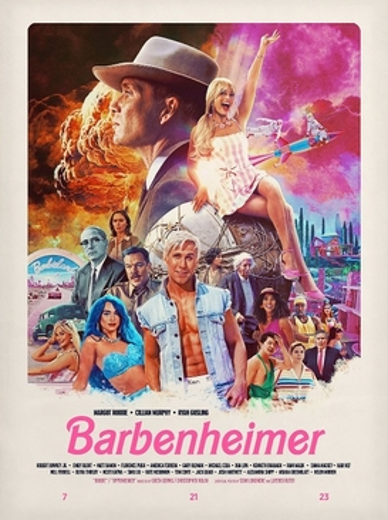
So many movie-goers will be making it a double-feature experience that started as a meme, the portmanteau “Barbenheimer,” to mark the cultural-phenomenon moment. And the marketing frenzy accompanying the release of Greta Gerwig’s film has been an astonishing plethora of collaborations with consumer-goods companies and retailers.
To join the pink-inspired fray, I’m featuring Barbie’s health care lives in today’s Health Populi blog. [There’s a summary of my origin story with the Barbie doll in the Hot Points below, if you want to know why the heck the Barbie doll is a topic in one of my near-3,000 posts on this website].
From her launch at New York Toy Fair in March 1959, the Barbie doll has had dozens of professional careers well beyond being the fashionista for which she is best-known. I grew up in one of the first generations of little girls who played with Barbie dolls, and I still have my treasured collection of those first dolls and iconic outfits from the golden vintage era of the Barbie doll.
But health care and being a first responder in the larger health and well-being ecosystem have featured prominently along Barbie’s career path over her 64 years of existence.
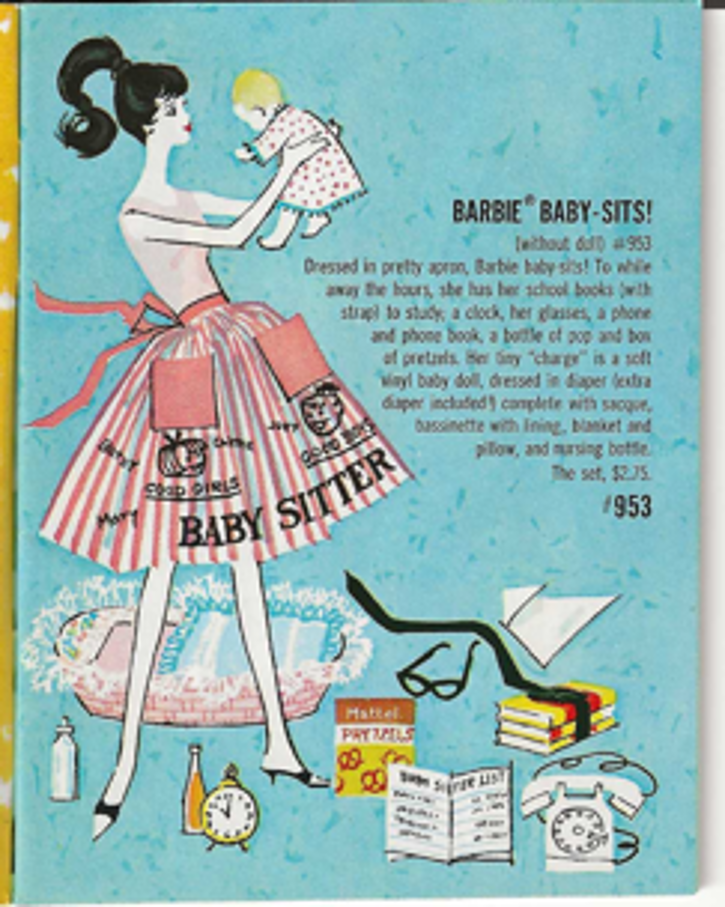
The Barbie doll’s first foray into care-giving was probably as a babysitter: the outfit/persona was called “Barbie Baby-Sits!” and note the exclamation in the name: caring is fun!
Here’s a scan from one of the booklets originally packaged with the outfits sold in the early 1960s, showing us the outfit which, in this case, came with lots of fun, tiny accessories such as the baby doll, a bottle for feeding, the sweet basinette for baby, a diaper, a clock, and some things that any babysitter in the 1960s would want to have on-hand — books for studying, a box of cookie mix for baking, a soda, a landline phone, and a list of emergency contacts. I was amazed to see today, when I unearthed my original Barbie Baby Sits! from its storage, that one of the books is titled “How to Lose Weight.”
This outfit was one of the first created for the doll, coming onto market around 1962.
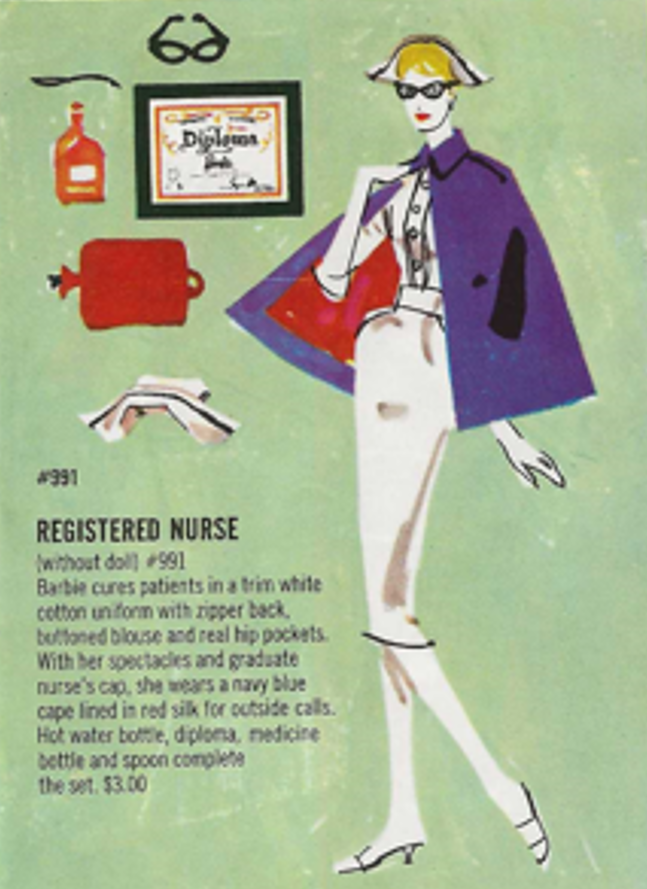
Barbie graduated from babysitting to being a nurse, portrayed through the outfit called “Registered Nurse” released around 1961.
The mini-catalog page explains: “Barbie cures patients in a trim white cotton uniform with zipper back, buttoned blouse and real hip pockets. With her spectacles and graduate nurse’s cap, she wears a navy blue cape lined in red silk for outside calls.”
The ensemble came packed with a hot water battle, a diploma, a medicine bottle, and a little spoon — along with dramatic black eyeglasses.
Barbie was also a first-responder in this early 1960s cohort of costumes in the persona of an American Airlines Stewardess. In the years this outfit was marketed, Barbie also had more generic business careers portrayed in several outfits. My two favorites in this business/working girl mode were “Career Girl,” a black tweed suit with matching hat; and, “Busy Gal,” a red two-piece jacketed suit which was packed with a black art portfolio labeled “Fashion Designer.”
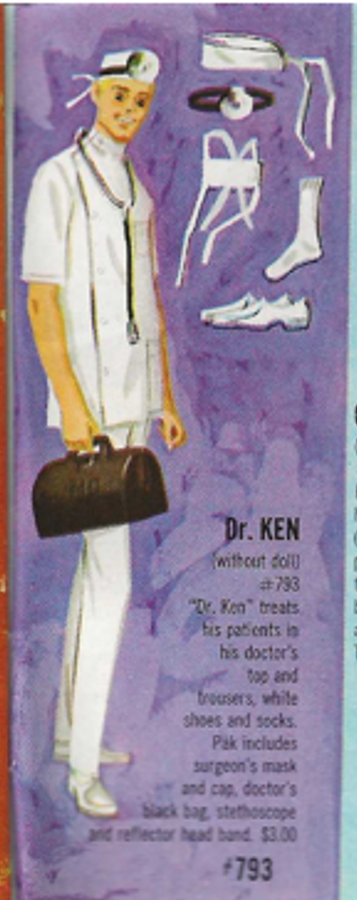
While Barbie was a first responder of many types — police officer, firefighter, member of the armed forces, lifeguard — in fact, Barbie did not become a doctor until 1973.
In the early vintage era in Barbie’s world, the doctor role (and outfit) went to Ken around 1963.
Here he is from the original catalog, all suited up in his white uniform akin to Richard Chamberlain as Dr. Kildare (which launched on TV in 1961): “Dr. Ken treats his patients in his white doctor’s top and trousers, white shoes and socks,” the catalog page tells us. His accessory pak (as spelled on the page) included a surgeon’s mask and cap, a doctor’s black bag, stethoscope and reflector head band.
Notwithstanding her relatively later completion of medical school, Barbie was intended to be a vessel through which children could dream about the future.
Ruth Handler was a co-founder of Mattel with her husband Elliot; they named the Barbie doll after their daughter, Barbara. In Dream Doll, her 1994 autobiography, Handler wrote,
“My whole philosophy of Barbie was that through the doll, the little girl could be anything she wanted to be. Barbie always represented the fact that a woman has choices.”
Health Populi’s Hot Points: It is not widely known that I wrote a book about the Barbie doll inspired by and nostalgically re-awakened around her 35th anniversary in 1994. The book Contemporary Barbie was published by Antique Trader Books in 1996 and a second edition in 1997 during a period of Barbie-collecting madness as a huge cohort of Baby Boomers was celebrating the three-and-a-half-decade milestone of their favorite childhood plaything.
My book focused on the modern history of the Barbie doll this side of the 1980s — the first year a Black doll was finally authorized by Mattel to be named “Barbie. In the 80s, as well, Barbie’s career paths widened, spanning every conceivable job category including being an astronaut, a UNICEF ambassador, a Canadian Mountie and a member of the U.S. Air Force, Army, Marines, Navy. She was a fighter in Desert Storm, a police officer, a Rockette, a ballerina, and a lifeguard (in a Baywatch licensed version). She worked as a firefighter, a teacher, a veterinarian, and was an athlete in many competitive sports — a tennis star, an Olympic skater, a gymnast, and equestrienne, as well as being an Ice Capades performer, among other sporting pursuits.
Oh, and she ran for President in 1992 and since then.
Regardless of where you might fall in a pro- or anti-Barbie camp, the power of play is mighty powerful in a child’s life. There is peer-reviewed evidence on the benefits of play in childhood development: here’s a link from the American Academy of Pediatrics on the subject. Within that research portfolio is specialized study into the power of playing with dolls, which help children work through fantasies and scenarios for socialization and neurological development.
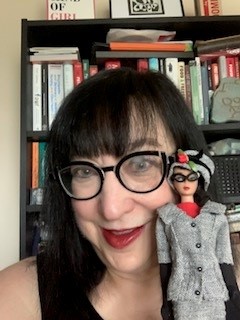
I know my family (my husband and I, and our daughter and her boyfriend) will all be doing our Barbenheimer Best this weekend to be playful and thoughtful in the movie theatre thinking heavy thoughts about the nature of war and technology innovation, and feeling joyful and blessed in the world of Barbie and friends.
Oh, and I’ve already retrieved my box of vintage Barbie stuff to revisit on Sunday for fun and nostalgia. Along with being a Barbie doll aficionado, my family and I are also LEGO maniacs and live by the LEGO credo, “leg godt,” or “play well.” I wish you well and to do the same….




 Interviewed live on BNN Bloomberg (Canada) on the market for GLP-1 drugs for weight loss and their impact on both the health care system and consumer goods and services -- notably, food, nutrition, retail health, gyms, and other sectors.
Interviewed live on BNN Bloomberg (Canada) on the market for GLP-1 drugs for weight loss and their impact on both the health care system and consumer goods and services -- notably, food, nutrition, retail health, gyms, and other sectors. Thank you, Feedspot, for
Thank you, Feedspot, for  As you may know, I have been splitting work- and living-time between the U.S. and the E.U., most recently living in and working from Brussels. In the month of September 2024, I'll be splitting time between London and other parts of the U.K., and Italy where I'll be working with clients on consumer health, self-care and home care focused on food-as-medicine, digital health, business and scenario planning for the future...
As you may know, I have been splitting work- and living-time between the U.S. and the E.U., most recently living in and working from Brussels. In the month of September 2024, I'll be splitting time between London and other parts of the U.K., and Italy where I'll be working with clients on consumer health, self-care and home care focused on food-as-medicine, digital health, business and scenario planning for the future...